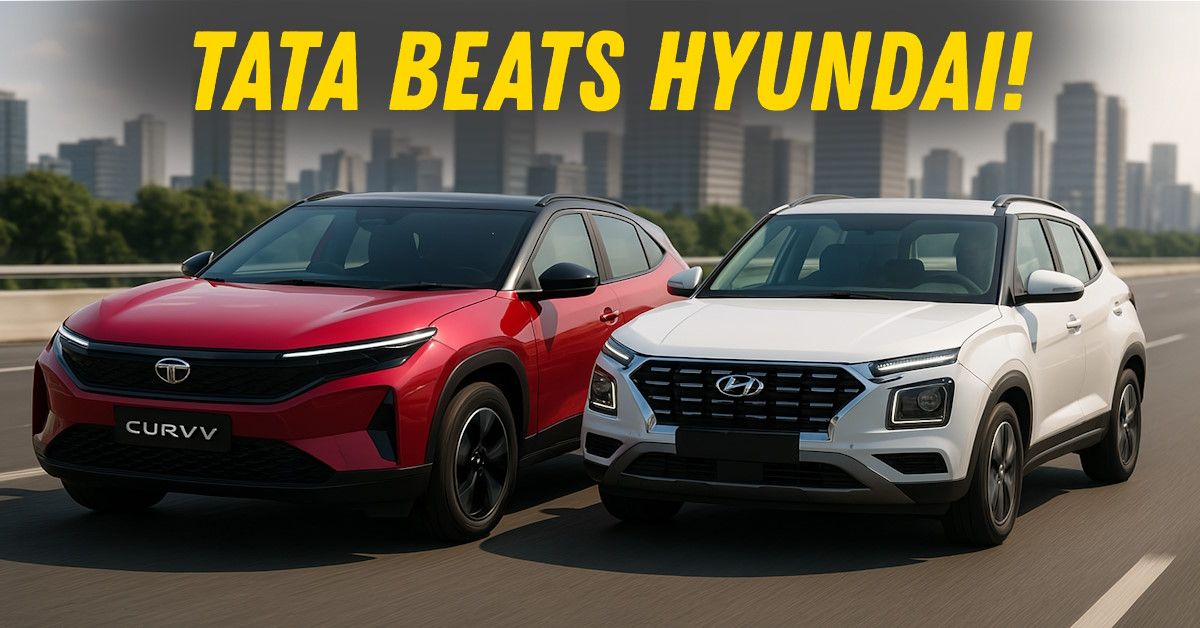How Tata Outpaced Hyundai: Inside the Sales Turnaround Strategy


Tata Motors has bounced back to become India’s second-largest carmaker in terms of retail sales, overtaking both Hyundai and Mahindra in March 2025. The Mumbai-headquartered company recorded retail sales of 48,462 units during the month, registering a 5% year-on-year growth. In contrast, Hyundai saw a 5% decline, slipping to fourth place.
This shift marks a significant milestone for Tata, which had spent much of the past seven months trailing behind. So, what helped Tata regain its position? A mix of strategic pricing, timely product rollouts, and proactive dealer initiatives appears to have done the trick.
Two names stand out when you look at Tata’s sales numbers: the Punch and the Nexon. The Punch, which has consistently featured among India’s best-selling cars since its launch, continued its strong run into 2025. Its compact footprint, SUV stance, and competitive pricing have resonated with Indian buyers.
Meanwhile, the Nexon remains a crowd favourite — available in both petrol/diesel and electric versions. With its five-star safety rating, modern design, and well-balanced performance, it continues to attract customers looking for value without compromising on features or safety.
The newly launched Tata Curvv added a premium touch to Tata’s offering. With 3,785 units sold in March alone, it’s clear that the Curvv has struck a chord with Indian buyers. Positioned in the competitive C1 SUV segment, the Curvv offers a futuristic design, new-age interiors, and features that appeal to young urban buyers.
Its early success signals Tata’s growing strength in understanding and catering to evolving customer preferences — especially in the premium compact SUV segment, where expectations are high and competition is fierce.
While strong products played a big role, Tata’s pricing strategy gave it an edge during the month. Attractive discounts of up to ₹2.05 lakh on models like the Harrier and Safari during the festive period helped move inventory and pull in fence-sitters. These were accompanied by exchange bonuses, loyalty benefits, and other sweeteners that gave buyers more reasons to choose Tata.
What stood out, however, was the role played by Tata’s dealer network. Many dealers introduced:
These initiatives helped improve footfall and converted interest into actual sales. As one dealer put it, “Having strong products like the Punch and Nexon is half the job — the rest is about making it easy for buyers to take the final step.”
While Tata surged ahead, its competitors faced their own set of challenges.
Hyundai, once a consistent No. 2, registered 42,511 units in March — a 5% drop compared to the previous year. Though the Creta remains a segment leader, Hyundai’s overall line-up seems to be feeling the heat. The brand’s EV strategy is still finding its footing in India, especially as Tata’s Nexon EV continues to dominate in that space.
Several broader market trends worked in Tata’s favour — and the company capitalised on them smartly.
SUVs made up over 55% of all new car sales in FY25. Buyers continue to prefer higher ground clearance, a commanding driving position, and robust styling. Tata’s SUV-heavy line-up — ranging from the Punch to the Safari — offered something for everyone.
Even as overall EV sales plateaued due to increasing competition, Tata still enjoys a clear lead. The Nexon EV remains a popular pick among city buyers, and new models like the Tiago EV are helping the brand tap into more budget-conscious segments.
Today’s buyers are more informed and less brand-loyal than before. Tata’s ability to offer feature-loaded cars at competitive prices gave it an edge over rivals perceived as more premium but less value-driven.
Tata’s March success isn’t just about seasonal offers — it reflects a shift in strategy and consumer perception. The company’s focus on safety, EVs, and smart pricing is clearly paying off.
In the coming months, Tata is expected to launch the Harrier EV and the much-awaited Sierra EV, which could further strengthen its portfolio. On the dealership front, there’s an increased focus on digitisation — from online bookings to virtual product demos — aimed at enhancing the overall customer experience.
Hyundai, on the other hand, will need to bring more aggressive pricing, stronger compact SUV options, and a clearer EV strategy if it wants to reclaim its lost ground.
Tata Motors’ ability to overtake Hyundai in March 2025 is more than just a sales win — it’s a reflection of smart decisions made at the right time. By offering the right mix of products, pricing, and customer experience, Tata has re-established itself as a brand that understands what Indian buyers want.
But the race is far from over. As buyer preferences evolve and competition intensifies, all eyes will be on how Tata sustains its position — and how its rivals respond in the months to come.